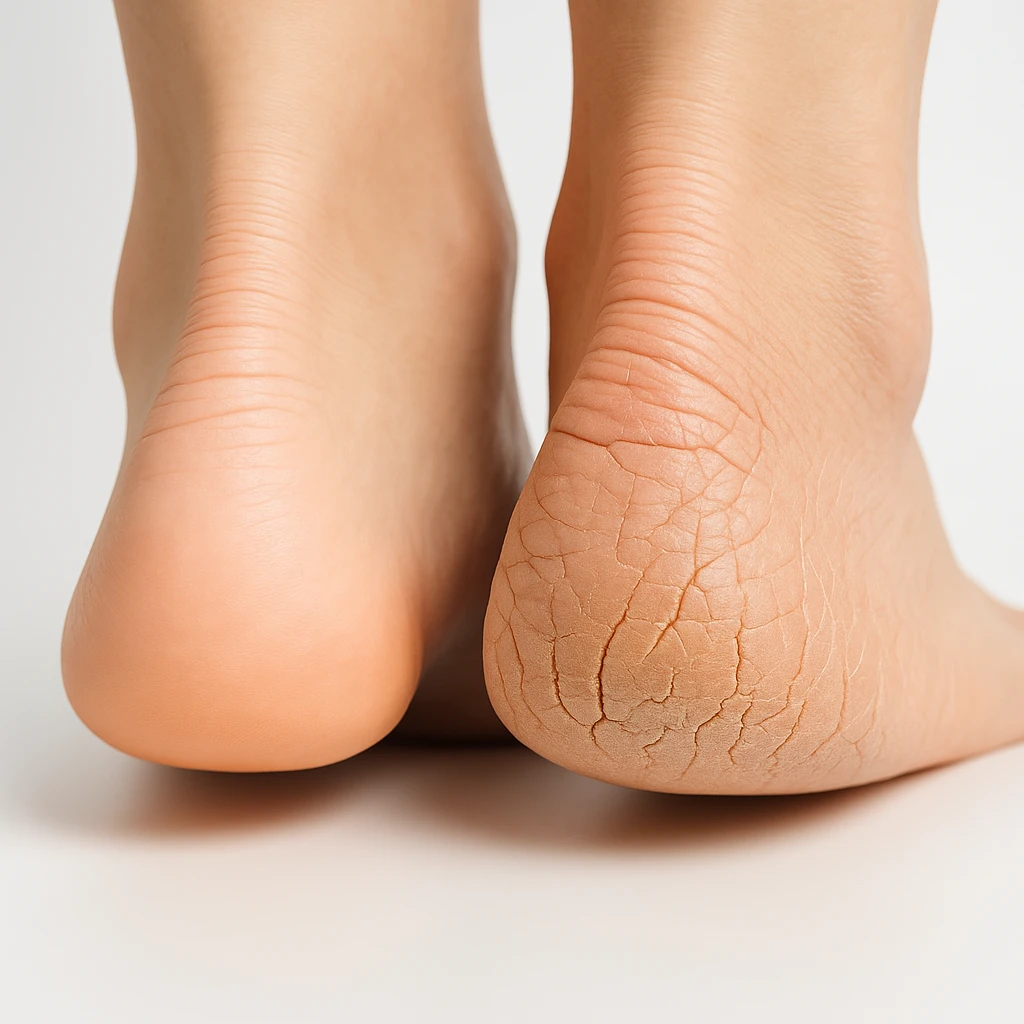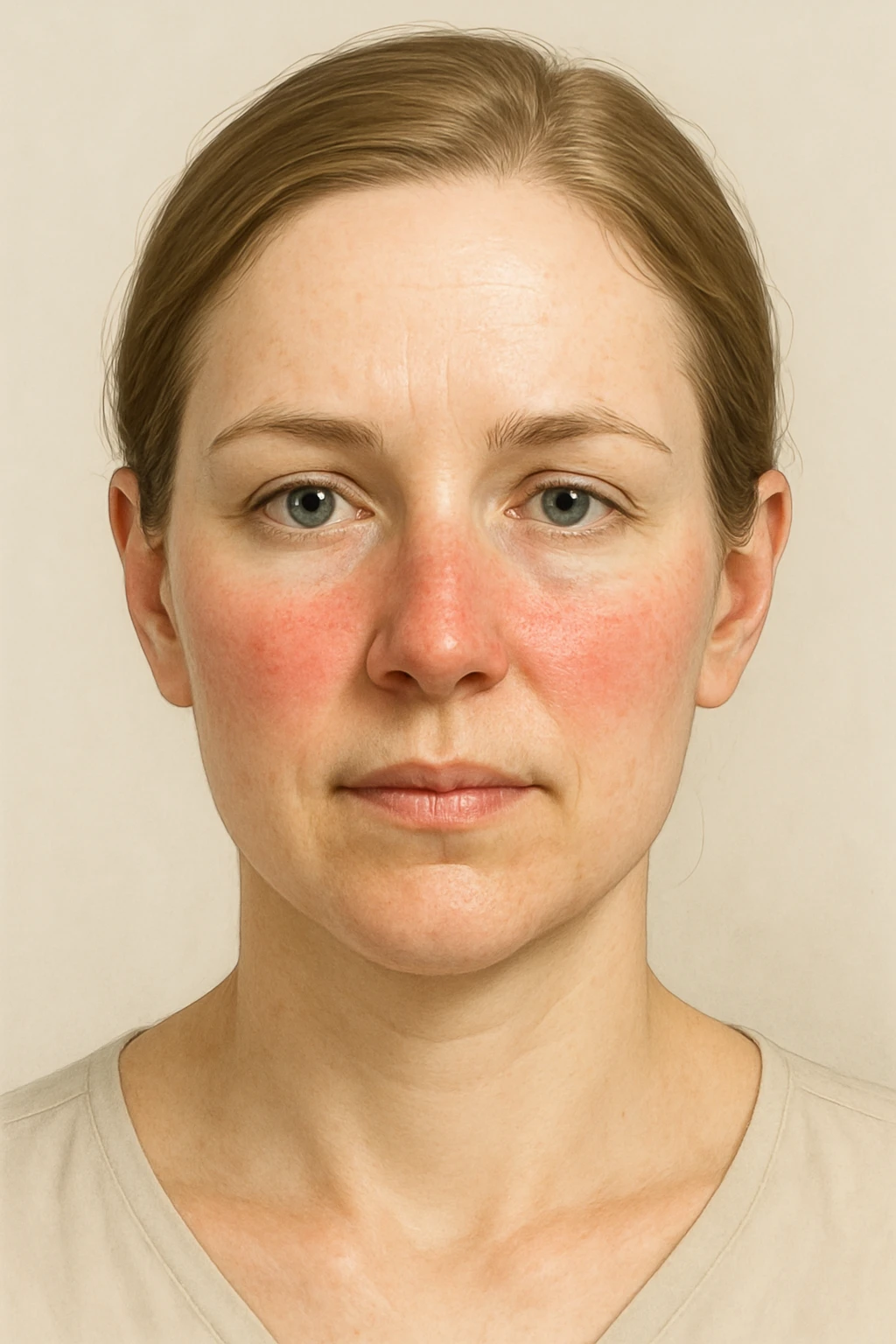What Hives on the Body Mean and How to Treat Them Safely
What Causes Hives on the Body and How They Develop
Hives, or urticaria, are a common skin reaction that can affect anyone, including children and adults. They appear suddenly as raised, itchy patches on the skin that may come and go within hours. While the appearance can be alarming, hives on the body are usually temporary and not contagious. Understanding what causes them helps families respond calmly and seek care only when necessary.
What hives look like
Hives typically appear as red or pink welts that can vary in size from small dots to large patches. The welts may merge together, forming larger areas of swelling. They often change location-fading in one spot and appearing in another within a short time. The hallmark symptom is itching, which can be intense, though some people may feel burning or tingling instead. In some cases, deeper swelling called angioedema may occur around the eyes, lips, or hands, making the skin feel tight or puffy.
- Color and shape: Red or pink raised welts that vary in size.
- Duration: Spots typically fade within hours and can reappear elsewhere.
- Symptoms: Itching, burning, or tingling sensations.
- Possible swelling: Angioedema may affect the eyes, lips, or hands.
How hives develop
Hives form when immune cells in the skin, called mast cells, release histamine and other natural chemicals into nearby tissues. This process, known as mast-cell degranulation, causes small blood vessels to leak fluid under the skin’s surface, creating visible swelling and redness. The same biological mechanism occurs in allergic reactions, but hives on the body can also arise from non-allergic triggers like temperature changes or pressure on the skin.
Who gets hives and how common they are
Hives are common-about one in five people will experience them at least once in their lifetime. They can occur at any age and are often seen in children and young adults, though older adults may be affected as well. Acute hives usually resolve within days or weeks, while chronic hives-those lasting longer than six weeks-are less common and may persist or recur over time.
Common triggers
Many different factors can trigger hives on the body. These include certain foods such as nuts, eggs, shellfish, or milk; medications like antibiotics and nonsteroidal anti-inflammatory drugs (NSAIDs); and infections, particularly viral illnesses. Insect bites or stings can also provoke outbreaks. Physical triggers such as heat, cold, sunlight, or firm pressure on the skin can cause a type known as inducible urticaria. For some people, no specific cause is found-these are called idiopathic hives.
- Food-related: Nuts, eggs, shellfish, milk.
- Medication-related: Antibiotics, NSAIDs.
- Infection-related: Viral or bacterial illnesses.
- Environmental or physical: Heat, cold, sunlight, pressure.
- Insect-related: Bites and stings.
- Unknown causes: Idiopathic hives without identifiable triggers.
Recognizing Hives on the Body and When to Seek Medical Help
Hives can look and feel uncomfortable, but most cases are mild and short-lived. Recognizing typical patterns and knowing when symptoms suggest something more serious helps parents and caregivers respond appropriately. This section explains what to expect and which warning signs require immediate medical attention.
Typical symptoms of hives
Hives usually appear as raised, itchy welts that vary in size and shape. Each spot, or wheal, fades within 24 hours without leaving a mark, though new ones may appear as older ones disappear. This moving pattern is characteristic of urticaria. Itching is the main symptom and can cause discomfort or irritability, especially in children. Occasionally, the skin may feel warm or slightly tender, but there is no blistering or scaling.
- Appearance: Raised, itchy welts of different shapes and sizes.
- Duration: Each spot fades within 24 hours but may recur elsewhere.
- Pattern: Rash moves or shifts over time.
- Sensation: Intense itching, sometimes mild warmth or tenderness.
- Skin changes: No blistering or scaling.
Signs of something more serious
Most hives on the body resolve without complications, but certain symptoms signal a potentially life-threatening allergic reaction called anaphylaxis. Seek emergency care immediately if hives occur with swelling of the lips, tongue, or throat; difficulty breathing; tightness in the chest; or dizziness and fainting. These signs indicate airway or circulatory involvement and require urgent attention. If hives appear after a known trigger such as a food, medication, or insect sting, treat it as an emergency and call for help right away.
- Red-flag symptoms: Swelling of lips, tongue, or throat.
- Breathing difficulties: Wheezing, chest tightness, shortness of breath.
- Circulatory signs: Dizziness, fainting, or sudden drop in blood pressure.
- Trigger context: Occurs after food, medication, or insect sting exposure.
Diagnosing Hives on the Body and Ruling Out Other Conditions
Most cases of hives are diagnosed through a detailed history and physical examination rather than complex testing. Because hives have a distinct appearance and pattern, a clinician can often confirm the diagnosis by discussing symptoms and examining the skin. Understanding how doctors distinguish hives from other rashes helps families know what to expect during evaluation and when further testing may be needed.
What your doctor looks for
Doctors focus on how long the rash has been present, how it looks, and how it behaves. Hives are raised, itchy welts that appear suddenly and usually resolve within 24 hours in one area, even if new spots develop elsewhere. During the visit, your provider may ask about recent foods, medications, infections, or stress to identify possible triggers. The timing, duration, and movement of lesions help distinguish hives from other persistent or scaly rashes.
- Duration: Each welt fades within 24 hours, though new ones may appear.
- Pattern: Lesions move rather than stay fixed.
- Appearance: Raised, red, itchy welts without scaling.
- Trigger history: Recent exposure to foods, medications, or infections.
When additional testing is needed
Laboratory tests are usually unnecessary because hives are diagnosed clinically. Testing may be considered if hives last longer than six weeks, recur frequently, or show unusual features such as pain, bruising, or long-lasting marks. In these cases, your doctor may order blood tests or refer you to an allergy or dermatology specialist to rule out underlying conditions. Routine testing is not required for typical, short-term hives.
- When to test: Persistent, recurrent, or atypical cases.
- Possible tests: Blood work or targeted allergy testing.
- Referral: Specialist input if an underlying disease is suspected.
Conditions that can resemble hives
Several skin disorders can mimic hives but behave differently. Urticarial vasculitis, for instance, causes painful lesions lasting more than 24 hours and may leave bruising once they fade. Other look-alikes include contact dermatitis (triggered by skin irritants), viral exanthems (accompanied by fever), and certain autoinflammatory syndromes that cause recurrent, long-lasting rashes. Correct identification ensures proper treatment and follow-up.
| Condition | Key Difference from Hives |
|---|---|
| Urticarial vasculitis | Painful lesions lasting more than 24 hours, may bruise. |
| Contact dermatitis | Triggered by direct contact; causes scaling or oozing. |
| Viral exanthem | Often accompanied by fever or systemic symptoms. |
| Autoinflammatory syndromes | Recurrent, long-lasting rashes linked to systemic inflammation. |
When to see a doctor: Seek prompt medical care if hives last more than six weeks, recur frequently, or occur with swelling of the lips, tongue, or breathing difficulty.
Treatment for Hives on the Body: From Home Care to Advanced Therapies
Most cases of hives resolve naturally, but when itching or swelling becomes uncomfortable, treatment focuses on relieving symptoms and preventing recurrence. Managing hives on the body involves home measures and, when necessary, prescription medication. Knowing when to escalate care helps families manage flare-ups safely and effectively.
First-line care at home
The first step is to reduce itching and avoid triggers. Non-sedating, second-generation antihistamines are preferred because they block histamine-the chemical responsible for itching and swelling-without causing drowsiness. These can be taken once daily and are safe for most children and adults when used correctly. Avoiding triggers such as certain foods, medications, or heat exposure can also reduce flare-ups. Cool compresses and loose clothing soothe irritated skin.
- Preferred medications: Non-sedating, second-generation antihistamines.
- Trigger control: Avoid common irritants such as foods, drugs, or heat.
- Comfort measures: Use cool compresses and breathable clothing.
- Supervised adjustments: Only increase antihistamine doses under medical guidance.
When stronger medicine is needed
If hives are severe or persistent, a short course of oral corticosteroids may help reduce inflammation quickly. These should be used only for brief periods to avoid side effects. For chronic or resistant hives, advanced therapies such as omalizumab (a biologic that targets allergic pathways) or cyclosporine may be prescribed under specialist supervision. These treatments are typically reserved for cases that significantly affect quality of life.
| Treatment Option | Use Case | Notes |
|---|---|---|
| Oral corticosteroids | Severe, short-term flares | Used briefly to control inflammation. |
| Omalizumab | Chronic hives unresponsive to antihistamines | Biologic therapy administered by a specialist. |
| Cyclosporine | Refractory chronic urticaria | Used under medical supervision when other treatments fail. |
What not to do
Scratching can worsen irritation and swelling. Keep nails short and skin cool. Avoid using unverified home remedies or harsh topical products that may irritate the skin. Focus on proven comfort measures and approved medications. If hives persist or worsen despite these steps, consult a healthcare provider for personalized care.
- Avoid scratching or rubbing affected areas.
- Skip unverified or herbal remedies.
- Use only prescribed or recommended creams.
Prevention and Long-Term Outlook for Hives on the Body
Living with hives on the body can be challenging, especially when flare-ups seem unpredictable. However, simple daily habits and a clear understanding of triggers can greatly reduce discomfort and help prevent recurrences. Most people experience complete recovery, while those with chronic hives can still live comfortably with the right management strategies and medical support.
Everyday prevention
Prevention begins with reducing contact with known triggers. If specific foods, medications, or physical factors such as pressure, heat, or cold have been identified as causes, avoiding them can help prevent future outbreaks. Gentle skin care is also important-use mild soaps, keep baths and showers short, and avoid hot water that can dry or irritate the skin. Wearing loose, breathable clothing and keeping the body cool may also lessen itching and redness during flare-ups.
- Avoid known triggers such as certain foods, medications, or temperature extremes.
- Use mild, fragrance-free soaps and keep baths short with lukewarm water.
- Wear loose, breathable fabrics to reduce irritation.
- Keep skin cool and hydrated to ease itching and redness.
Tracking triggers
Keeping a simple symptom-trigger diary can make a big difference in managing hives. By recording foods, medications, physical activities, and emotional stressors, families can begin to identify patterns that may reveal likely causes. This information is also useful for healthcare providers, who can recommend more tailored treatments or lifestyle adjustments. Even when no clear trigger is found, tracking flare-ups can reassure parents that they are actively helping to manage the condition.
- Record daily foods, medications, and activities.
- Note the timing, duration, and severity of hives.
- Include emotional or environmental factors such as stress or weather changes.
- Share your notes with a healthcare provider to refine management plans.
Prognosis and long-term outlook
The outlook for hives on the body is generally positive. Many acute cases fade once the trigger-such as a food, medication, or infection-is removed. For those with chronic hives, symptoms may last for weeks or months, but effective treatments and avoidance strategies can bring lasting relief. Although chronic urticaria can affect comfort and sleep, it rarely signals a serious underlying illness. With continued care and trigger awareness, most individuals eventually experience long symptom-free periods and maintain a good quality of life.
| Type | Duration | Common Outcome |
|---|---|---|
| Acute hives | Lasts days to weeks | Usually resolves after trigger removal |
| Chronic hives | Persists for six weeks or longer | Managed effectively with treatment; may enter remission |
Frequently Asked Questions About Hives on the Body
- Are hives on the body contagious?
- No, hives are not contagious. They are a skin reaction caused by immune cell activity and histamine release, not by infection or contact.
- How long do hives usually last?
- Most hives fade within a few hours and resolve within days. Chronic hives, however, can persist or recur for six weeks or longer.
- Can stress cause hives to appear?
- Yes, emotional stress can act as a trigger for some people. It may worsen existing hives or contribute to flare-ups in sensitive individuals.
- What should I do if hives come with swelling or breathing problems?
- Seek emergency medical care right away. Swelling of the lips, tongue, or throat and difficulty breathing can signal a severe allergic reaction called anaphylaxis.
- Do hives always mean an allergy?
- Not necessarily. Hives can result from allergies, infections, temperature changes, medications, or even physical pressure on the skin.
- Can hives on the body come and go in different places?
- Yes. Individual welts often disappear within 24 hours but may reappear on other parts of the body as part of the same episode.
- When should someone see a doctor for hives?
- If hives last longer than six weeks, recur frequently, or interfere with sleep or comfort, it’s best to see a healthcare provider for evaluation.
- Are antihistamines safe for children with hives?
- Non-sedating, second-generation antihistamines are considered safe for most children when used at appropriate doses recommended by a doctor.
- Do hives leave scars or marks?
- No, hives usually fade without leaving scars or discoloration. If lesions bruise or persist beyond 24 hours, another condition may be involved.
- Can lifestyle changes help prevent hives?
- Yes. Avoiding known triggers, using gentle skin care, and keeping a diary of flare-ups can reduce recurrence and improve long-term control.













